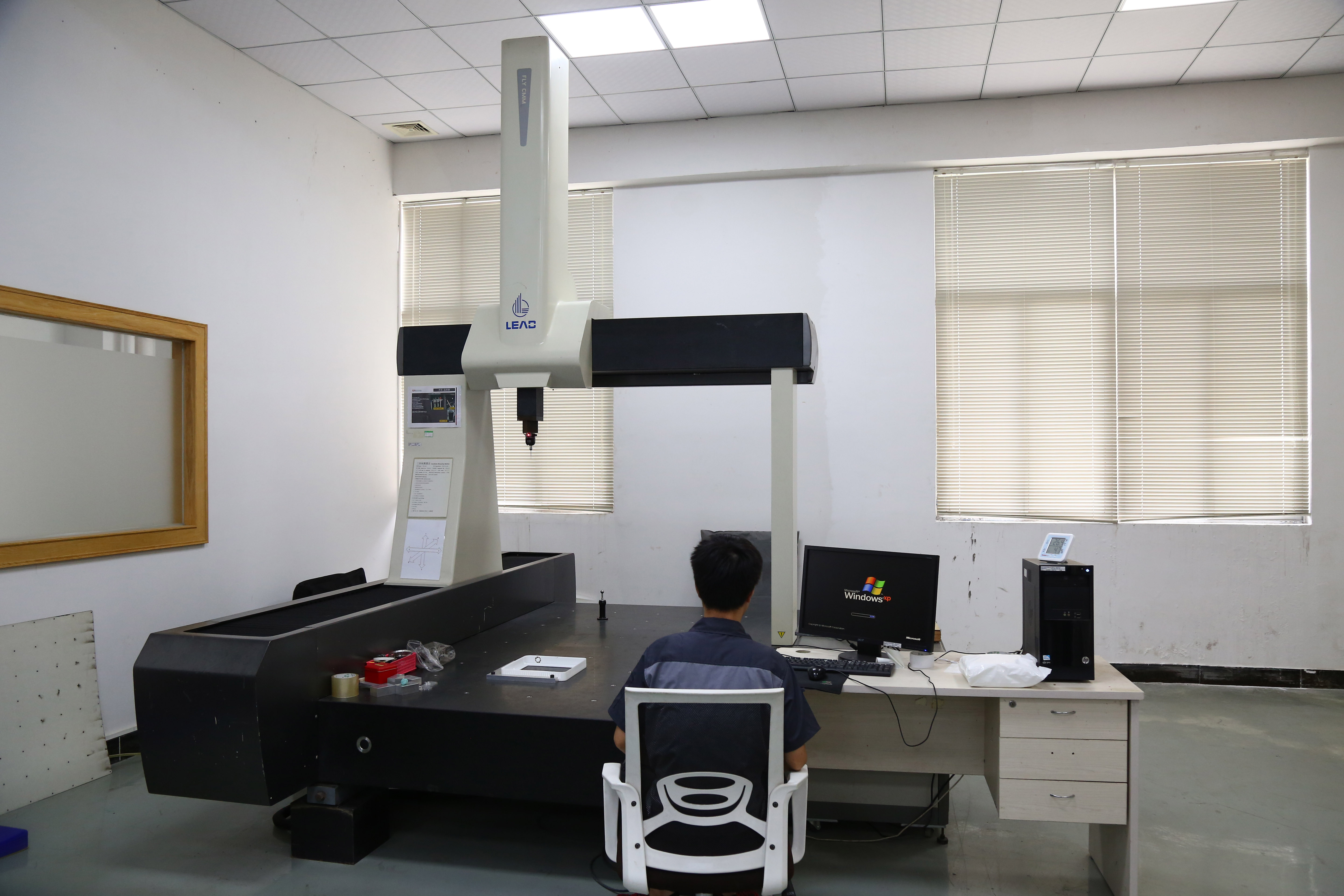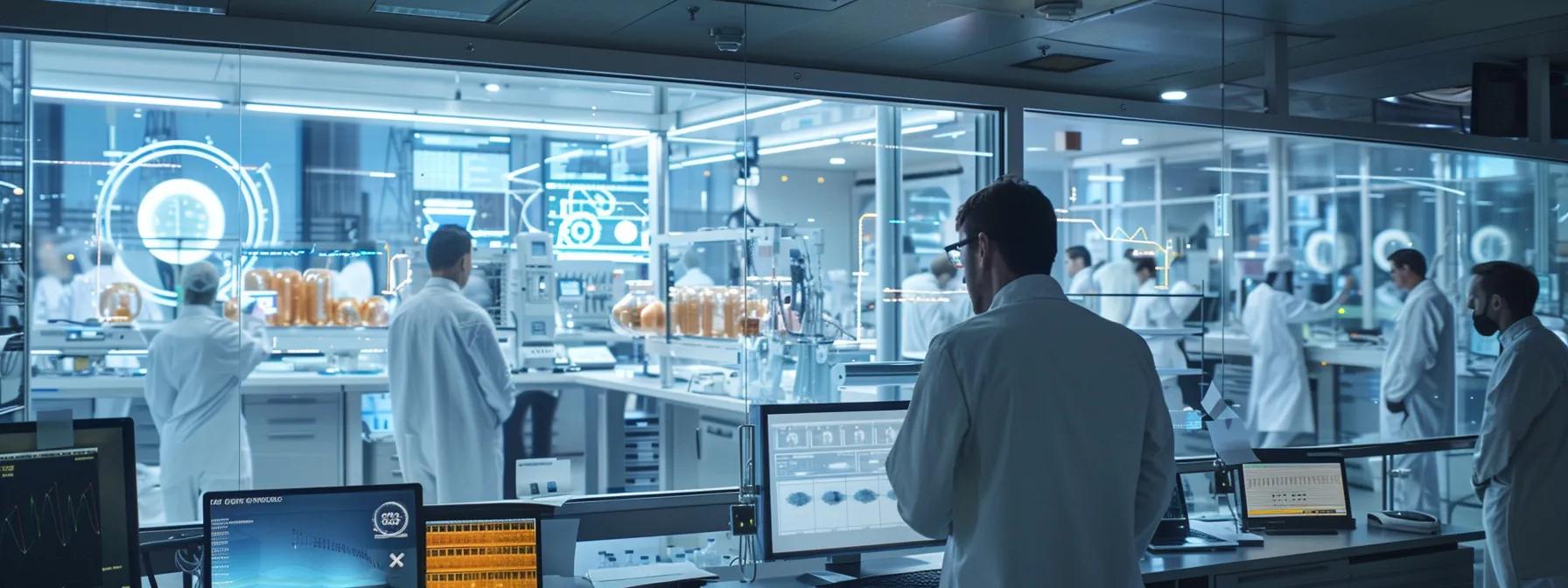Table Of Contents:
- How Quality Control Influences Costs in Precision Metal Parts Manufacturing Services In China
- What Is the Role of Quality Control in Precision Metal Parts Manufacturing In China?
- How Do Different Quality Control Methods In China Impact Manufacturing Costs?
- How Does Quality Control Affect Material Selection and Its Costs In China?
- How Does Quality Control Integrate With Manufacturing Processes In China to Control Costs?
- What Is the Cost of Poor Quality (COPQ) in China for Precision Metal Parts Manufacturing?
- How Does Certification Like ISO 9001 Help Reduce Quality Control Costs?
- How Is Automation In China Transforming Quality Control and Cost Management?
- Frequently Asked Questions
- Final Thoughts
How Quality Control Influences Costs in Precision Metal Parts Manufacturing Services In China
Quality control is essential for maintaining the integrity and efficiency of manufacturing processes, especially in precision metal parts production. When custom metal components are required, stringent quality control measures reduce production errors, scrap, rework, and optimize material selection. This article explores how various quality control practices ensure high precision while translating into cost savings. You will review standardized inspection procedures, automation benefits, material-specific challenges, and the overall cost of poor quality (COPQ). In doing so, you’ll gain insights into how quality control influences your bottom line and improves productivity and waste reduction. Ultimately, integrating quality control with manufacturing processes and certifications like ISO 9001 boosts customer trust and global competitiveness.
What Is the Role of Quality Control in Precision Metal Parts Manufacturing In China?
Quality control in precision metal parts manufacturing ensures that every component meets the necessary industry specifications. It does so through strict guidelines, continuous monitoring, and data-driven analysis to minimize deviations and defects during production.
How Does Quality Control Ensure High Precision and Defect-Free Parts?
Quality control uses rigorous measurement techniques and statistical process control tools. Systems such as coordinate measuring machines (CMM), laser scanners, and first article inspections identify even minute deviations from design specifications. Routine calibration and automated inspections, combined with control charts and histograms, help predict wear and catch issues before they develop into costly defects. This structured approach reduces scrap, improves repeatability, and ensures consistent adherence to strict tolerances.

Which Quality Control Standards and Certifications Affect Manufacturing Costs In China?
Standards like ISO 9001 and Six Sigma provide structured frameworks that streamline processes and reduce variability. These standards require uniform inspection processes and the continuous documentation of improvements, which lower warranty costs and boost customer trust. Certifications from international organizations for nondestructive testing and statistical process control further help reduce scrap and rework costs.
What Are the Common Quality Control Processes Used in China for Metal Parts Manufacturing?
Common processes include visual inspections, machine calibration checks, control chart monitoring, and automated optical inspections. Companies may perform first article inspections on initial production runs and use in-process inspections throughout production. Nondestructive testing methods, including ultrasonic and X-ray inspections, verify internal integrity without damaging components. Regular audits and feedback loops support continuous improvement, ensuring high quality with optimal productivity.
How Do Different Quality Control Methods In China Impact Manufacturing Costs?
The chosen quality control methods can significantly influence overall manufacturing costs. Effective quality control minimizes downtime and reduces defects—thereby lowering the need for rework, scrap, and warranty expenses.
What Is the Cost Effectiveness of Automated vs. Manual Inspection?
Automated inspections, using machine learning and AI-powered vision systems, deliver high repeatability and fast data processing. These systems can inspect thousands of parts per hour with precise control charts and real-time analytics. Although the initial setup cost is high, long-term savings come from reduced labor, lower error rates, and minimized scrap. In contrast, manual inspections are susceptible to human error and variability, especially over long shifts. Switching to automation can reduce labor costs by up to 25% and significantly improve overall efficiency.
Do you need help to calculate metal parts manufacturing cost?
Talk to our experts. Our qualified engineers are always happy to answer your questions.
How Does Inspection Frequency Influence Labor and Equipment Costs In China?
While increasing inspection frequency may raise short-term labor and equipment costs in China, it leads to long-term savings. Frequent inspections detect process deviations early, minimizing the cost of producing large batches of defective products. Early problem detection reduces expensive rework and scrap disposal while improving data collection to support ongoing process improvement. A balanced approach using both automated systems and manual spot checks helps manage labor costs and equipment wear effectively.
What Are the Cost Implications of Rework and Scrap Due to Quality Control Failures?
Failures in quality control can result in high costs due to rework, scrap, and warranty claims. Each reworked or scrapped part represents lost material, labor, and a potential loss of customer confidence. Research indicates that a mere 5% reduction in defect rates can save 15–20% on production expenses in China. Moreover, quality failures often necessitate additional process modifications and staff retraining, further increasing costs. Proactive measures such as root cause analysis and continuous improvement protocols reduce these indirect expenses significantly.
How Does Quality Control Affect Material Selection and Its Costs In China?
Quality control in China is closely tied to material selection, directly impacting both product performance and raw material costs. By enforcing strict quality standards on materials, manufacturers reduce waste and scrap while ensuring that components meet demanding specifications.
How Do Material Types Like Aluminum, Steel, and Titanium Influence Quality Control Costs?
Materials such as aluminum, steel, and titanium each present unique quality control challenges in China. Aluminum is favored for its lightweight and corrosion resistance but may need more frequent inspection due to its softer nature. Steel requires stringent heat treatment and stress testing because of its high strength. Titanium, though expensive, offers excellent strength-to-weight ratios and corrosion resistance but demands specialized processing. The inherent properties of each material impact inspection frequency, nondestructive testing approaches, and overall cost effectiveness.
What Is the Relationship Between Material Quality and Defect Rates?
High material quality leads to lower defect rates because materials that meet established specifications exhibit more consistent performance. Quality measures, including supplier audits, incoming inspections, and material testing, ensure that characteristics such as hardness, tensile strength, and composition are consistent. Consequently, using high-quality materials reduces scrap, rework, and downtime while enhancing product durability and market competitiveness.
How Can Quality Control In China Optimize Material Usage to Reduce Waste and Costs?
In China, Effective quality control optimizes material usage by ensuring accurate measurements and reducing excess cut-offs. Process improvements and real-time monitoring allow manufacturers to identify and eliminate waste. Tools such as control charts and nondestructive testing help streamline material flow. For instance, precise laser cutting minimizes kerf loss and maximizes usage efficiency, thereby cutting raw material costs and contributing to environmental sustainability.
RELATED ARTICLE: Quality Insights in Sheet Metal Fabrication: Local and China
How Does Quality Control Integrate With Manufacturing Processes In China to Control Costs?

Integrating quality control throughout manufacturing—from design and prototyping to final inspection—is crucial for reducing production costs and eliminating inefficiencies. Embedding quality checks at every stage ensures that high standards are consistently met and errors are caught early.
What Quality Control Measures Are Essential in CNC Machining to Minimize Costs?
In CNC machining, essential quality control measures include first article inspections (FAI), in-process gauging, and post-machining dimensional verification. These steps ensure components meet tight tolerances and design specifications. Digital inspection tools and control charts detect deviations early, reducing the risk of costly rework and scrap. Automated vision inspection systems further increase throughput by continuously monitoring production, while predictive maintenance anticipates tool wear and avoids downtime.
How Does Quality Control in Stamping and Casting Affect Production Efficiency?
Due to the variability inherent in stamping and casting, rigorous quality control protocols are necessary. Real-time monitoring—using control charts and non-contact laser scanning—helps maintain consistent outcomes. These methods ensure parts are free from defects like porosity or misalignment and reduce the need for rework. Standardized testing protocols and strong traceability systems lead to improved production efficiency and yield.
How Does on-Time Delivery Depend on Effective Quality Control?
Effective quality control ensures that only defect-free parts progress through production, facilitating on-time delivery. Early defect detection prevents bottlenecks and delays, streamlining production and allowing for better scheduling. With reduced downtime and timely order dispatch, customer satisfaction improves and rush orders are minimized, ultimately reducing labor and overtime costs.
What Is the Cost of Poor Quality (COPQ) in China for Precision Metal Parts Manufacturing?
The Cost of Poor Quality (COPQ) refers to the hidden and explicit costs resulting from quality control failures. These include expenses related to rework, scrap, warranty claims, and even lost customer trust, all of which significantly impact profitability.
How Do Defects Lead to Increased Rework, Scrap, and Warranty Costs?
Defects cause increased rework and scrap, leading directly to higher production costs. Each defective part demands additional labor for re-inspection and repair, while warranty claims incur replacement costs and potential brand damage. Even small improvements in defect rates can lead to significant cost savings over time.
What Are the Hidden Costs Associated With Quality Control Failures?
In addition to direct costs, quality control failures incur hidden costs such as production downtime, lost market opportunities, and reduced customer loyalty. For example, a production stoppage can lead to considerable revenue losses per hour. Damage to brand reputation may also result in longer-term customer attrition. Preventive quality measures help mitigate these indirect expenses by ensuring smoother and more consistent production.
How Can Proactive Quality Control Reduce Overall Manufacturing Costs?
Proactive strategies—such as root cause analysis, continuous improvement protocols, and lean manufacturing practices—minimize defects early on, reducing the need for costly rework. Tools like Six Sigma analyses and kaizen initiatives foster process stability and efficiency, ultimately lowering operational costs and boosting profitability.
How Does Certification Like ISO 9001 Help Reduce Quality Control Costs?

ISO 9001 certification and similar standards reduce manufacturing costs by establishing standardized procedures and continuous improvement cycles. These certifications not only lower the risk of defects but also strengthen customer confidence and market competitiveness, resulting in long-term savings.
What Are the Cost Savings From Implementing ISO 9001 in Manufacturing?
Implementing ISO 9001 leads to significant savings through streamlined processes, reduced waste, and enhanced consistency. Periodic audits and standardized processes lower rework and scrap, while smoother audits and fewer non-compliance issues minimize unexpected disruptions. Companies with ISO 9001 certification often report up to a 20% reduction in defect rates, leading to lower warranty and re-inspection costs.
How Do Industry Standards Influence Pricing and Customer Trust?
Adhering to industry standards like ISO 9001 demonstrates a commitment to quality, which bolsters customer trust and can justify premium pricing. When warranty claims decrease and customer satisfaction rises, pricing structures become more favorable, driving higher margins and long-term customer loyalty.
How Is Automation In China Transforming Quality Control and Cost Management?
Automation and Hybrid metal fabrication In China is revolutionizing quality control by introducing faster, more accurate inspection methods and predictive maintenance tools. This transformation enhances product quality while reducing long-term operational costs.
What Are the Cost Benefits of AI-Powered Quality Control Systems?
AI-powered systems use machine learning and advanced image recognition to perform rapid, accurate inspections, analyzing thousands of components per hour. Their implementation leads to reduced labor requirements, minimized scrap, and fewer warranty claims. Many manufacturers report up to a 30% reduction in inspection-related costs, with efficiency improving as systems continue to learn.
How Does Automation Improve Inspection Speed and Reduce Errors?
Automated systems boost inspection speed by processing parts with minimal human intervention. Advanced sensors and real-time data analytics enable continuous monitoring and quick error detection. This rapid response reduces the need for batch rework and downtime while improving process traceability and auditability, ultimately ensuring on-time delivery and increased customer satisfaction.
ALSO READ: AI & Automation Redefining Custom Sheet Metal Fabrication
What Are the Investment Costs vs. Long-Term Savings of QC Automation?
Although the initial investment in QC automation can be substantial, the long-term savings are significant. Improved production throughput, reduced rework, and lower scrap rates contribute to overall cost reduction. Many manufacturers see a return on investment within two to three years, with ongoing benefits including decreased labor costs and fewer warranty claims.
Frequently Asked Questions
Q: How Does Quality Control Improve Manufacturing Efficiency?
A: Quality control enforces rigorous inspection practices, reduces defect rates, and streamlines processes. Tools like control charts and predictive maintenance strategies minimize rework and scrap, leading to reduced downtime and improved throughput.
Q: What Role Does ISO 9001 Certification Play in Cost Reduction?
A: ISO 9001 standardizes manufacturing processes, reduces defects, and enhances customer trust. This leads to fewer warranty claims and lower costs related to rework and audits.
Q: Can Automated Quality Control Really Lower Labor Costs?
A: Yes, automated systems using AI-powered inspection tools detect defects faster and more consistently than manual methods. This reduces labor costs and minimizes errors, resulting in significant savings.
Q: How Is Material Selection Influenced by Quality Control Measures?
A: Quality control ensures that raw materials meet stringent standards, reducing the occurrence of defects and waste. This optimization leads to higher quality products and lowers costs for rework and scrap.
Q: What Is the Impact of Regular Inspection Frequency on Production Costs?
A: Regular inspections catch deviations early, stabilizing production and preventing large-scale defects. Although there may be slightly higher short-term labor and equipment costs, the long-term benefits include lower scrap rates and reduced rework expenses.
Q: How Does Automation in Quality Control Enhance On-Time Delivery?
A: Automation provides quick turnaround times and real-time data analysis, supporting proactive issue resolution. This ensures consistent quality, minimizes production delays, and results in improved on-time delivery.
Q: What Are the Hidden Costs of Poor Quality in Metal Parts Manufacturing?
A: Hidden costs include production downtime, increased warranty claims, and potential damage to brand reputation. Proactive quality control minimizes these indirect losses and protects long-term profitability.
Final Thoughts
Effective quality control is a cornerstone of precision metal parts manufacturing. By integrating advanced inspection methods, leveraging automation, and adhering to standards like ISO 9001, manufacturers can significantly reduce rework, scrap, and hidden costs. These practices not only improve on-time delivery and customer satisfaction but also enhance long-term profitability. Ultimately, adopting proactive quality control measures creates a competitive edge in the global manufacturing landscape.
Looking for a custom metal parts manufacturer in China?
Talk to our experts. Our qualified engineers are always happy to answer your questions.

















